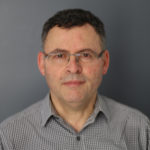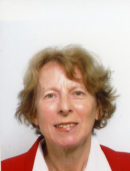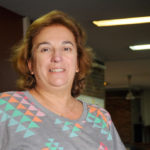 |
Chair:
Iossif Papadakis (Greece), 2024 – 2028 (jhep – at – physics.uoc.gr)
|
| |
Vice-Chair:
Eugene Churazov (Germany), 2022 – 2026*
|
 |
Vice-Chair:
Brigitte Schmieder (France), 2022 – 2026*
|
| |
Vice-Chair:
Wenfei Yu (China), 2024 – 2028
|
Intercommission/Panel/Task Group Liaisons:
SC B: Sotin, C. (USA), 2016 – 2020
SC B: Swain, M. (USA), 2016 – 2020
SC C: Swain, M. (USA), 2016 – 2020
PCB: Dipankar Bhattacharya (India), 2022 – 2026
PIDEA: Mateja Dumbovic (Croatia), 2022 – 2026
PMLDS: Brigitte Schmieder (France), 2025 – 2029
Terms of Reference:
Commission E deals with obtaining, sharing and analyzing data taken from space-borne platforms that are associated with the study of stars, galaxies and the universe at large. The data consist of high energy particles and radiation from the entire electromagnetic spectrum. It is divided into two subcommissions: E1 for the observations of objects outside our Solar System, from stars to distant galaxies; E2 for the study of the Sun as a star. Two shared subcommissions deal with the transiton from the Sun to the Heliosphere (D2/E3) and with planets outside the solar system (B6/E4).
“A Roadmap for Astronomy Missions in the Coming Decades” (published in ASR, 50, n°1, July 2012), prepared by a group of scientists under the leadership of Dr P. Ubertini
(National Institute of Astrophysics – INAF, Italy), executive summary.
Back to top
Sub-Commission E1: Galactic and Extragalactic Astrophysics
 |
Chair:
Alexandra Veledina (Finland), 2024 – 2028
|
 |
Vice-Chair:
Eda Sonbas (Turkey), 2022 – 2026*
|
 |
Vice-Chair:
Gulab Dewangan (India), 2022 – 2026
|
Terms of Reference
Sub-commission E1 deals with the study of the Universe beyond the solar system. Our knowledge of Cosmos at large was revolutionized by the space born missions and satellites that were first launched in the previous century, observing astronomical objects from the far infrared to optical and UV, as well as the X-ray and gamma rays. Major objective of the E1 sub-commission is to coordinate, stimulate, encourage and organize events to present the results from the study of energetic phenomena in our Galaxy and beyond, using mainly data from space missions. In particular, E1 topics include the theoretical and observational study of X-ray binaries with compact companions (like black holes and neutron stars), of active galactic nuclei and quasars, which are the most luminous, persistent objects in the Universe, of the intensively star-forming, ultraluminous galaxies, of gamma ray bursts, as well as gravitational waves from space.
Back to top
Sub-Commission E2: The Sun as a Star
 |
Chair:
Cristina Mandrini, C. (Argentina), 2022 – 2026*
|
 |
Vice-Chair:
Yuhong Fan (USA), 2022 – 2026*
|
 |
Vice-Chair:
Peng Fei Chen (China), 2022 – 2026* (chenpf – at – nju.edu.cn)
|
Terms of Reference
Sub-commission E2 deals with the study of the Sun as a star including, in particular, the theoretical and observational study of the solar structure and radiation. The latter topics cover the solar interior structure and dynamics, the mechanism of solar magnetic cycles, the structure and dynamics of the lower solar atmosphere, including phenomena that influence its radiation and energetic balance, as well as the structure of its magnetic field because of its relevance and implications to the understanding of the solar-stellar connection. In the same line, E2 deals with the sources of solar irradiance and their long-term variability.
Back to top
Sub-Commission D2/E3: The Transition from the Sun to the Heliosphere
 |
Chair:
Olga Khabarova (Russia), 2024 – 2028* (olik3110 – at – gmail.com)
|
| |
Co-Chairs:
Silvano Fineschi (Italy), 2024 – 2028*
Susanna Parenti (France), 2024 – 2028*
|
Terms of Reference
(1) Observational and theoretical study of the phenomena of the quiet and active sun in the photosphere, chromosphere, and corona that relate to energy release in form of coronal heating, solar wind acceleration, energetic particle generation, flares and coronal mass ejections.
(2) Observational and theoretical study of the subsequent phenomena in the inner heliosphere and of the processes governing its structure, such as fast and slow solar wind streams, interplanetary coronal mass ejections and shock waves, solar energetic particles, corotating interaction regions including their space weather effects.
Sub-Commission D2/E3 deals with the quiet and active Sun and its atmosphere expanding in a form of the thermal solar wind and accelerating charged particles to suprathermal energies via numerous dynamical processes. The sub-commission goal is to support studies of the processes associated with dynamics of the solar layers that fill the heliosphere with multi-scale plasma and magnetic structures and energetic particles. Their propagation through the interplanetary medium structures the interplanetary space, and their variations, which determine the terrestrial environment, are the key drivers of space weather phenomena.
The sub-commission topics cover the following observational and theoretical studies:
- Quiescent Sun, solar wind formation and acceleration.
- The quiet and disturbed solar wind. Solar-terrestrial couplings.
- Processes in the photosphere, chromosphere, and corona related to energy release leading to coronal heating, as well as transient phenomena associated with flares, coronal mass ejections, solar energetic particles and solar cosmic rays.
- Propagation of transient solar structures and accelerated particles into the heliosphere and their interaction with the ambient magnetic field and the solar wind plasma. Temporal and spatial properties of magneto-plasma structures in the heliosphere.
- Ground and space observations, including multi-point, of the Sun and the solar wind and new approaches to big data processing to address the items listed above.
Back to top
Sub-Commission B6/E4: Exoplanets Detection, Characterization and Modelling
Chair:
Francesca Altieri (Italy), 2022 – 2026*
Vice-Chair:
Michael Ireland (Australia), 2022 – 2026*
Terms of Reference
Sub-commission B6/E4 deals with Exoplanets detection, characterization and modelling.
The recent discoveries of nearly a thousand of extrasolar planetary systems have opened up a number of new questions about their properties, physical conditions along with a rethinking of the concepts of habitability and life. In this context, it is not obvious whether a planetary system like our own solar system is common or unusual in the Galaxy. Planets may form and orbit around stars of almost every kind. We have found many planets which we call exotic, i.e. very close to their parent star, in highly eccentric orbits, or around binary systems, in a word very different from planets in our solar system.
Recent observations have shown how diverse can be the physical conditions of planets, both in structure, with fluffy or very dense planets, and in the composition and atmospheric stratification. The key word is diversity.
Understanding the origin of such diversity is the goal of many of the new studies and current projects. Such activities may cover both scientific and technological aspects and could include:
- Analysis of the current and proposed projects for future observations
- Analysis of diversity of extrasolar planet
- The Solar System in the context of extrasolar planetary systems
- Definition, even non-conventional, of habitability and life
- Definition and detectability of organic pre-biotic material and biomarkers
- Laboratory activity supporting modelling and atmospheric properties studies
Back to top
* (after officer term) = second and final term in the office indicated